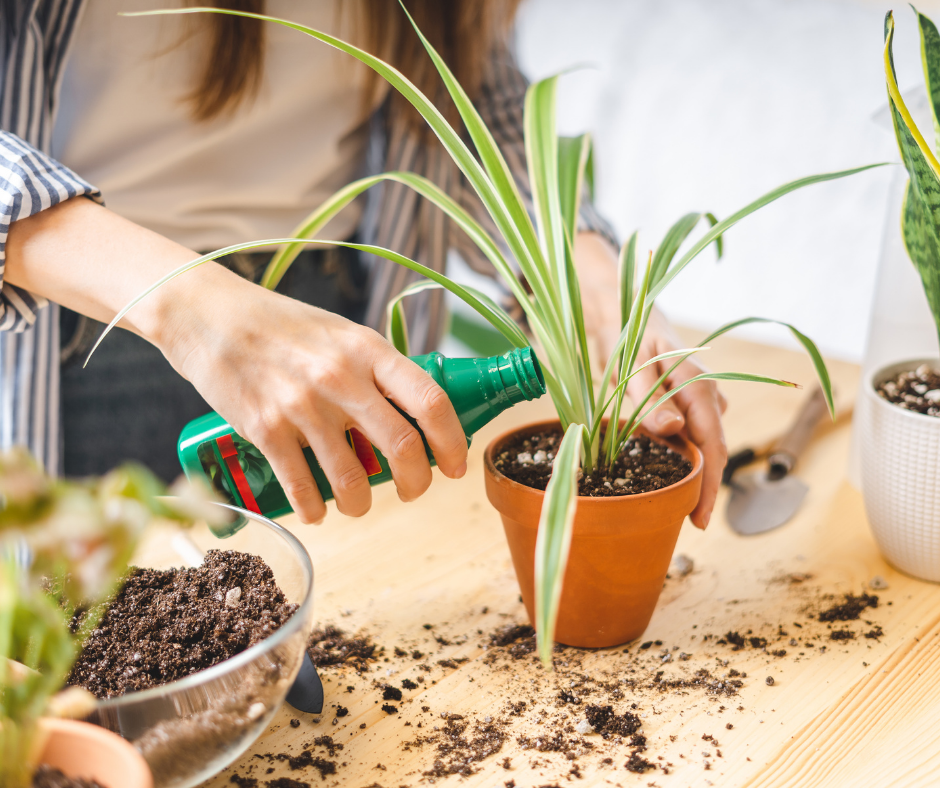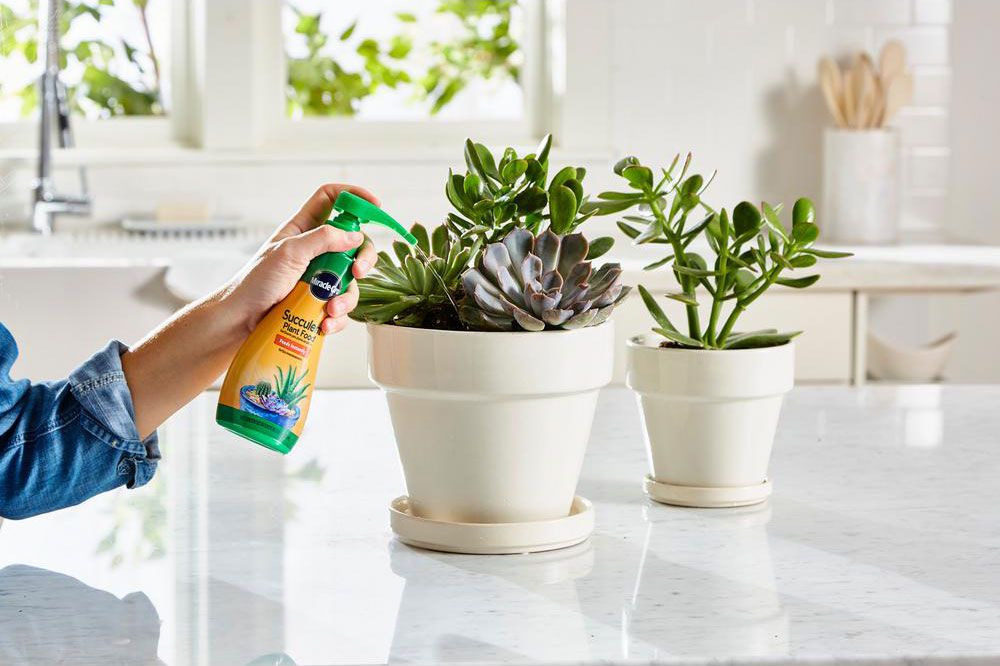Indoor plants brighten up any home, improve air quality, and create a calming, natural atmosphere. But to keep them healthy and lush, they need more than just sunlight and water — they require the right nutrients too. That’s where fertilizer comes in.
Whether you’re nurturing a towering Money Tree, a cluster of vibrant Snake Plants, or a charming collection of succulents, understanding how to choose the best fertilizer for indoor plants is key to keeping them green, strong, and thriving.
In this detailed guide, we’ll explain what indoor plants need, the types of fertilizers available, and how to pick the right one for your plant family.
Why Do Indoor Plants Need Fertilizer?

Unlike outdoor plants that benefit from natural soil nutrients and rain, indoor plants grow in limited soil with nutrients that gradually deplete over time.
Fertilizer replenishes essential nutrients like nitrogen, phosphorus, and potassium, promoting:
- Healthy foliage and vibrant color
- Strong root development
- Balanced growth and flowering
- Resistance against diseases and pests
Without regular feeding, even the most low-maintenance houseplants can develop weak stems, pale leaves, and stunted growth.
Understanding the Nutrients in Fertilizers
Most fertilizers contain three primary macronutrients, often displayed as a N-P-K ratio on the packaging.
What Is N-P-K?
- N (Nitrogen): Encourages leaf and stem growth; essential for lush, green foliage.
- P (Phosphorus): Supports root health, flower, and fruit development.
- K (Potassium): Boosts overall plant strength, disease resistance, and water regulation.
For example, a fertilizer labeled 10-10-10 contains equal parts of these nutrients.
Some fertilizers also contain:
- Secondary nutrients: Calcium, magnesium, sulfur.
- Micronutrients: Iron, zinc, manganese, copper, boron, molybdenum.
Types of Fertilizers for Indoor Plants

Indoor plant fertilizers come in several forms, each with its benefits and ideal uses.
Liquid Fertilizers
- Diluted with water and applied during regular watering.
- Quick nutrient absorption through soil and leaves.
- Easy to control and adjust based on plant needs.
Best for: Most indoor plants like Money Plants, Peace Lilies, and Ferns.
Granular Fertilizers
- Dry pellets or grains sprinkled on soil.
- Nutrients release slowly over time when watered.
- Longer-lasting, but harder to adjust quickly.
Best for: Larger pots, outdoor container plants, or less-frequently tended plants.
Slow-Release Fertilizer Pellets
- Coated pellets placed in the soil.
- Gradually release nutrients over 2–6 months.
- Reduce the need for frequent feeding.
Best for: Busy plant parents, larger pots, or plants with steady, even feeding needs.
Organic Fertilizers
- Made from natural sources like compost, fish emulsion, or seaweed extract.
- Eco-friendly and promote soil health.
- Often milder and slower acting.
Best for: Herbs, edible plants, and families preferring chemical-free options.
Foliar Sprays
- Liquid fertilizers applied directly to leaves.
- Fast absorption through leaf pores.
- Useful for quick nutrient boosts or correcting deficiencies.
Best for: Orchids, ferns, and plants with nutrient-deficient foliage.
How to Choose the Right Fertilizer for Your Indoor Plants

Selecting the perfect fertilizer depends on several factors. Here’s what to consider:
Know Your Plant Type
Different plants have different nutrient needs.
- Leafy Plants (Pothos, Snake Plant, Spider Plant): High in nitrogen for lush foliage.
- Flowering Plants (Peace Lily, Anthurium, African Violet): Balanced or higher phosphorus for blooms.
- Succulents & Cacti: Low-nitrogen fertilizer to prevent excess leafiness.
- Herbs (Basil, Mint, Coriander): Balanced N-P-K to promote foliage and taste.
Check the Growth Stage
- Young, growing plants: Need a fertilizer richer in nitrogen for foliage.
- Flowering stage: Switch to balanced or higher phosphorus formulas.
- Dormant plants (in winter): Fertilizing is unnecessary as growth slows.
Consider the Season
Most indoor plants grow actively from spring to early fall. Fertilize every 2–4 weeks during this period.
In winter, most plants rest. Reduce or stop fertilizing unless using grow lights or maintaining year-round growth indoors.
Choose the Application Method You Prefer
- Liquid fertilizers: Ideal for frequent, controlled feeding.
- Slow-release pellets: Best for hassle-free care.
- Organic options: Great for eco-conscious homes.
Recommended Fertilizer N-P-K Ratios for Common Indoor Plants

| Plant Type | Ideal N-P-K Ratio |
|---|---|
| Leafy Houseplants | 3-1-2 or 10-5-5 |
| Flowering Houseplants | 1-2-2 or 10-15-10 |
| Succulents & Cacti | 1-1-1 or 2-7-7 |
| Herbs | 5-5-5 or 10-10-10 |
How to Apply Fertilizer Correctly
Proper fertilization technique ensures plants absorb nutrients efficiently and avoids overfeeding.
General Guidelines:
- Always read the label instructions.
- Water plants before fertilizing to prevent root burn.
- Dilute liquid fertilizers more than recommended for sensitive or young plants.
- Wipe off excess fertilizer from leaves.
Tip: Over-fertilizing does more harm than under-fertilizing — it can cause yellowing leaves, leaf burn, or salt build-up in soil.
Common Signs Your Indoor Plants Need Fertilizer

- Pale, yellow, or faded leaves
- Stunted growth or smaller new leaves
- Drooping, weak stems
- Failure to bloom in flowering plants
- Poor root development
Natural, Homemade Fertilizer Options
If you prefer chemical-free care, try these natural fertilizers:
- Banana peel water: Rich in potassium and phosphorus.
- Crushed eggshells: Excellent calcium source.
- Used coffee grounds: Adds nitrogen (use sparingly).
- Compost tea: All-purpose organic liquid feed.
- Diluted aquarium water: Full of natural nutrients.
Final Thoughts
Choosing the right fertilizer is one of the easiest ways to keep your indoor plants healthy, vibrant, and growing beautifully year-round. Understanding your plant’s needs, growth stage, and preferred application method ensures you provide balanced, appropriate nutrition.
Whether you opt for an all-purpose liquid feed, slow-release pellets, or organic homemade blends, a little attention to fertilization goes a long way in supporting lush leaves, vivid blooms, and happy, thriving houseplants.
So next time your plants look a little pale or sluggish, check their feeding schedule — and give them the boost they deserve.





Leave A Comment